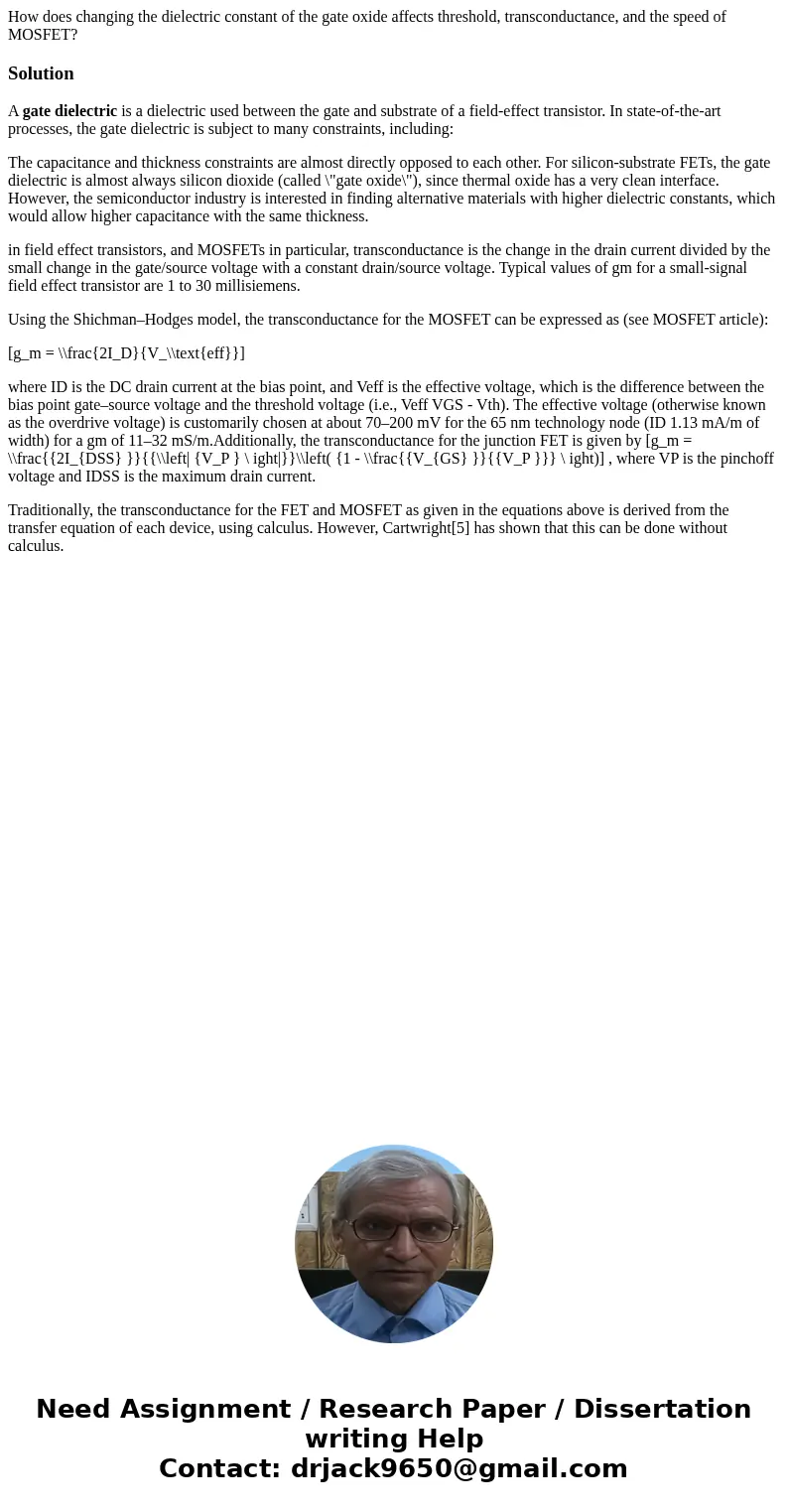How does changing the dielectric constant of the gate oxide
How does changing the dielectric constant of the gate oxide affects threshold, transconductance, and the speed of MOSFET?
Solution
A gate dielectric is a dielectric used between the gate and substrate of a field-effect transistor. In state-of-the-art processes, the gate dielectric is subject to many constraints, including:
The capacitance and thickness constraints are almost directly opposed to each other. For silicon-substrate FETs, the gate dielectric is almost always silicon dioxide (called \"gate oxide\"), since thermal oxide has a very clean interface. However, the semiconductor industry is interested in finding alternative materials with higher dielectric constants, which would allow higher capacitance with the same thickness.
in field effect transistors, and MOSFETs in particular, transconductance is the change in the drain current divided by the small change in the gate/source voltage with a constant drain/source voltage. Typical values of gm for a small-signal field effect transistor are 1 to 30 millisiemens.
Using the Shichman–Hodges model, the transconductance for the MOSFET can be expressed as (see MOSFET article):
[g_m = \\frac{2I_D}{V_\\text{eff}}]
where ID is the DC drain current at the bias point, and Veff is the effective voltage, which is the difference between the bias point gate–source voltage and the threshold voltage (i.e., Veff VGS - Vth). The effective voltage (otherwise known as the overdrive voltage) is customarily chosen at about 70–200 mV for the 65 nm technology node (ID 1.13 mA/m of width) for a gm of 11–32 mS/m.Additionally, the transconductance for the junction FET is given by [g_m = \\frac{{2I_{DSS} }}{{\\left| {V_P } \ ight|}}\\left( {1 - \\frac{{V_{GS} }}{{V_P }}} \ ight)] , where VP is the pinchoff voltage and IDSS is the maximum drain current.
Traditionally, the transconductance for the FET and MOSFET as given in the equations above is derived from the transfer equation of each device, using calculus. However, Cartwright[5] has shown that this can be done without calculus.

 Homework Sourse
Homework Sourse